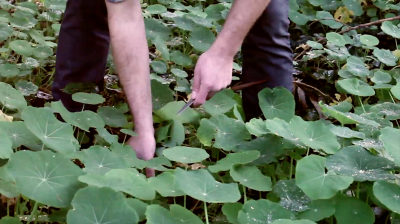If you want to eat locally, you might need not look any farther than your own backyard.
Over the past decade, Bay Area food enthusiasts and restaurateurs have espoused the virtues of buying local, organic ingredients. But more recently, foodies have taken this movement to the next level, foraging for wild foods in local parks or their own backyards and gardens.
Foraging saw an uptick in popularity beginning around 2009-2010 and has been gaining momentum ever since, said local forager Kevin Feinstein. He believes this resurgent interest stems from “people realizing that we’re highly disconnected from our food and from nature.”
“I think it’s one of the best ways to reconnect that there possibly is,” said Feinstein, who lives in Walnut Creek and leads wild food walks in the Bay Area. On his forays, Feinstein leads groups of about 20 around local parks, pointing out edible plants ranging from miner’s lettuce to wild artichoke to mustard flowers.
Many of these tours are provided through the organization ForageSF, which hosts dinners, classes and private events revolving around locally gathered foods. Iso Rabins, the founder of ForageSF, has made it his mission to support local foragers and the local food community.

